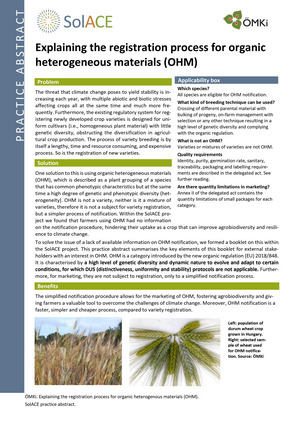Explaining the registration process for organic heterogeneous materials (OHM)
Author: Judit Fehér
Problem: The threat that climate change poses to yield stability is increasing each year, with multiple abiotic and biotic stresses affecting crops all at the same time and much more frequently. Furthermore, the existing regulatory system for registering newly developed crop varieties is designed for uniform cultivars (i.e., homogeneous plant material) with little genetic diversity, obstructing the diversification in agricultural crop production. The process of variety breeding is by itself a lengthy, time and resource consuming, and expensive process. So is the registration of new varieties.
Solution: One solution to this is using organic heterogeneous materials (OHM), which is described as a plant grouping of a species that has common phenotypic characteristics but at the same time a high degree of genetic and phenotypic diversity (heterogeneity). OHM is not a variety, neither is it a mixture of varieties, therefore it is not a subject for variety registration, but a simpler process of notification. Within the SolACE project we found that farmers using OHM had no information on the notification procedure, hindering their uptake as a crop that can improve agrobiodiversity and resilience to climate change.
zenodo.org: Explaining the registration process for organic heterogeneous materials (OHM)

 Souhaitez-vous ajouter le site web à l'écran d'accueil ?
Souhaitez-vous ajouter le site web à l'écran d'accueil ?